How much does a WMS cost?
WMS software
Logistics
September 20, 2024

Very variable costs...
The price of a WMS ( Warehouse Management System ) can vary considerably, ranging from €25,000 to €250,000 (or more) for its acquisition. The cost of WMS software depends on many factors, including the required features, the size of the warehouse, and the complexity of logistics operations.
implementation time study, mock-up, training, start-up) can range from 3 months to 15 months depending on the complexity of the needs and the diversity of the logistics flows to be covered. Obviously, we must not only take into account the cost of the WMS software and the integration service, but also other direct costs to be attributed to the project, mainly:
- The costs of purchasing and configuring portable equipment (labelers, PDAs, scales),
- The costs of developing computer interfaces (ERP, TMS , OMS),
- The (additional) costs of purchasing computer equipment (PC, server),
- The costs of installing WIFI in the warehouse.
Implementation and operating costs
Most publishers offer an implementation cost (or “build”) and an operating cost (“run”) in their pricing. The latter includes in particular:
- A software usage fee (monthly and based on the number of users and the number of activated options) often in SaaS (Software as a Service) mode,
- The associated curative and progressive maintenance.
The advantages of SaaS mode
Note that compared to so-called “On Premise” solutions, SaaS mode avoids investing in costly IT infrastructures (with associated maintenance). SaaS mode, with hosting from a third-party provider, also facilitates updates and allows you to benefit from developments. The SaaS solution thus provides “variabilization” of costs (OPEX versus CAPEX), which is particularly valuable for logistics providers.
However, it is crucial to carefully evaluate the price of logistics software . For example, the temptation to take second-hand equipment, to recover equipment already present in the warehouse or to buy your own references from a broker can prove counterproductive since this equipment is not always approved by the WMS editor . Recovered equipment may also not benefit from a maintenance contract ensuring standard replacement in less than 24 hours, for example.
What internal resource(s) should I provide?
WMS implementation project is far from negligible. We distinguish past tenses for:
- Collect information in the field,
- Meet to carry out studies,
- Make purchases (materials, consumables, additional services),
- Make progress updates with the service provider and internally,
- Manage IT adaptation work (soft and infra),
- Update the data that will be injected into the WMS (notably the item sheets and the location file, which consume a lot of exact data),
- Reorganize your storage and carry out inventory checks,
- Train yourself , practice the solution and transmit this knowledge (operating methods),
- Communicate internally and externally,
- Provide assistance during the first days of WMS .
Estimates of time and resources required
Some integrators mention time estimates by project phase, or even by resource typology, in their quote:
- Service provider side : time for project manager, developers, trainers.
- Client side : time for project manager, project team, Key Users, End Users.
It is usual to take (at a minimum):
- A “1 to 1” ratio , between the days spent by a project manager on the client side and those on the integrator side,
- And a ratio of “1 to 0.5” for each member of the project team.
How to calculate the return on investment with a WMS?
By definition, this involves calculating the total cost of acquiring a WMS :
- In the “Build” phase : license purchase and implementation costs (i.e. external costs in purchasing services and internal costs in time spent by the teams), purchasing costs in hardware, IT system adaptation costs, IT infrastructure costs.
- Then in the “Run” (or operating) phase: royalty and maintenance costs.
The gains generated by a WMS
It is important to compare these costs with the gains that this investment will generate, such as:
- Saving time,
- Reduction of preparation errors,
- Optimization of human resources,
- Fall in stocks,
- Mastery of handling equipment,
- Reduction of musculoskeletal disorders.
Indeed, the price of a WMS must be evaluated not only in terms of initial costs but also in terms of long-term benefits for the organization. Calculating ROI should include these factors to give a complete picture of the value added by logistics software .
We are at your disposal to discuss the subject in order to provide you with answers and advice. We can support you and help you achieve the objective that we have in common: controlling your logistics flows .
It should be noted that operational logistics consulting firms have cost and profit ratios that can help decision-makers decide on the best choice of WMS software .
Most read articles
Logistics
Supply Chain
June 10, 2024
Reverse logistics: our management of product returns
Reverse logistics, or reverse logistics, is a management process that focuses on returning products from the consumer to the manufacturer or distributor.
WMS software
Logistics
Supply Chain
October 4, 2024
What is a Warehouse Management System (WMS)?
In today's complex world of logistics, a WMS is key to optimizing warehouse operations, improving efficiency and reducing costs. With its advanced features, it helps meet logistics requirements by offering an efficient solution for managing the movement and storage of products within warehouses.
WMS software
Logistics
Supply Chain
March 25, 2025
Kpilote: ETL that connects your CMS to WMS Ego
E-commerce logistics connector, Kpilote facilitates data exchange between e-commerce platforms and business software like WMS. Associated with the WMS Ego solution, this ETL guarantees time saving, a reduction in errors and a better customer experience.

















